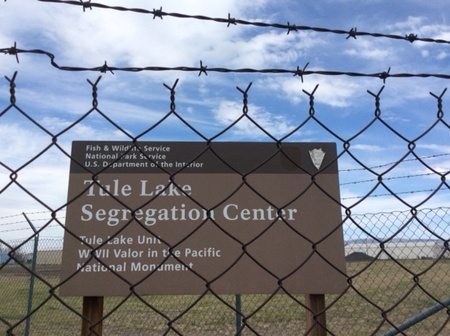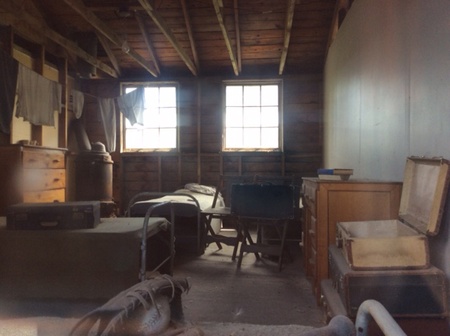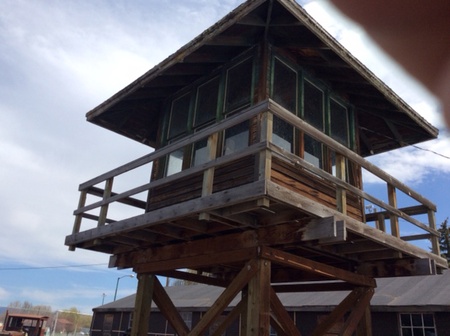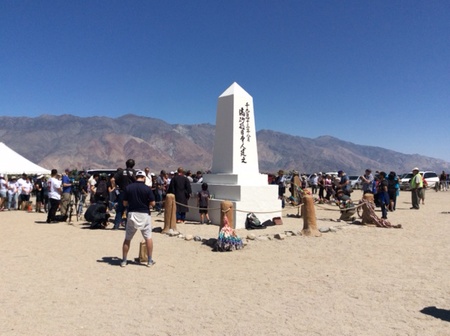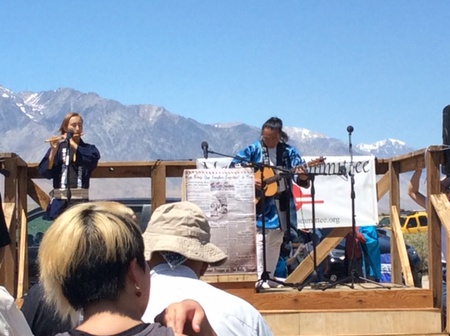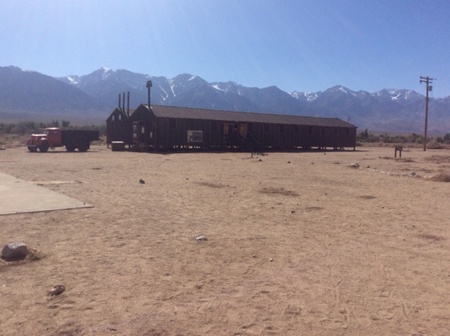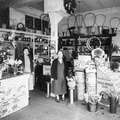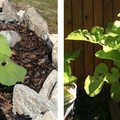NEXT STOP: PORTLAND
Our next stop was in Portland, Oregon to visit their magnificent Japanese Garden. When Nobuo Matsunaga, the former ambassador to Japan to the U.S. visited this garden, he proclaimed it to be, “The most beautiful and authentic Japanese garden in the world outside of Japan.” The garden is twelve acres and nestled in the West Hills of Washington Park overlooking the city. Designed in 1963, this garden has a Flat, Tea, Strolling Pond, Natural, Hidden and Zen Garden. Their gallery, gift shop and restaurant were also great places to browse.
One added attraction for our family was that our hotel was located just a block from Dr. Robert Shiomi’s office. My father, Arizo Tasaka and Dr. Robert Hajime Shiomi are first cousins. Dr. Shiomi was first forcibly sent to the US concentration camp in Minidoka, Idaho on September 9, 1942, and was later transferred to Manzanar on January 26, 1943.
We drove to Klamath Falls that evening and the next morning, locals advised us to drive up to Crater Lake. It was a ‘wow!’ moment. We climbed up the steep snowy bank with our summer footwear, but it was worth it. The scenery was so spectacular that we thought that we had entered heaven!
TULE LAKE SEGREGATION CENTER
This camp is located at the northern end of California, and has been considered by some to be the most controversial. The dissidents, those ‘deemed’ loyal to Japan by a leave clearance form that all Japanese American imprisoned in the camp were forced to fill out under duress, and some JAs who protested the incarceration were segregated into one camp. It was the largest camp, with peak population over 18,000, and it was the last to close (on March 20, 1946.) Canada’s largest camp, Tashme, held over 2,600 people at its peak.
The Visitor Center is located at the Tule Lake/Butte Valley Fairgrounds on Main Street in Tule Lake, California. It was off-season when we arrived, so there was only one person working there. There was a small display of Japanese American artifacts of life in Tule Lake, and behind the museum was a reconstructed guard tower and a barrack that was transported from the original site in Newell, California. A glass peep-hole embedded in the wall of the barrack allowed visitors to see additional artifacts and original furniture built by Japanese Americans back in 1942.
Tule Lake was a high security camp. The number of guard towers at this camp were increased from the original 6 (when Tule Lake first opened) to twenty-eight, and there were eight tanks and copious number of machine guns kept on the premises.
A work strike occurred after one farm worker was killed (five others were injured) in a truck accident with an underage driver behind the wheel. Inmates demanded improved safety and better working conditions, plus compensation for injuries on the job. When the problem wasn’t resolved, there was an outbreak of violence when Project Director Best fired the workers and brought in strike-breakers or ‘loyal’ inmates from the Poston and Topaz camps willing to pick the crops ready for harvesting. Martial law was declared when the U.S. Army was brought in, and over 200 detainees were arrested and placed into a crowded stockade. The camp stockade (or a ‘prison within a prison’ according to the site’s brochure) kept the ‘trouble-makers’ completely shut off from other internees. The original Tule Lake incarceration camp is located in Newell, California.
Canada did not have a camp comparable to the high security Tule Lake Segregation Center, although the POW camps in Petawawa and Angler, Ontario may come the closest. Japanese Canadians who protested from being separated from families and those who stood up against the unjust War Measures Act, were sent to prison camp adjacent to where the captured German and Italian POWs were held. They were behind barbed wires.
The young Nisei and older Issei were given shirts with a big, round red circle on it. Most thought they were to designate the ‘Japanese prisoners’ from others, but the reality was that it was designed as a bull's eye target for the guards to hit if necessary. That was one laughable moment. These protesters were segregated far away from the camps in B.C. Otherwise, there were no riots or violence in the B.C. camps.
Soon, we were on the road again and stayed the night in Carson City, Nevada. The next day, my brother wanted to go to Emerald Bay in South Lake Tahoe because of its spectacular scenery. Our end destination was Bishop, California, which was an hour’s drive from Manzanar. There was a big fishing derby going on in town, so we were lucky to have reached Bishop early to secure a motel suite.
We all woke up early to drive to Lone Pine to visit the Film History Museum. It was a nostalgic place for us since most of us watched some of the movies featured in the Museum that were shot in the region, such as “Bad Day at Black Rock” and “Gunga Din.”
MANZANAR PILGRIMAGE
April 28, 2018 was the Manzanar Pilgrimage. There were cars streaming onto the Manzanar National Historic Site, and some ten buses came in later. We got there early to do the driving tour around the site.
Manzanar, located in the Inyo County, California between Independence and Lone Pine, was the first of the ten Japanese American incarceration camps run by the War Relocation Authority to open. This region is also known as the Owens Valley, home of the California Paiute Indian tribe. Manzanar also means ‘apple orchard’ in Spanish. When standing in the Manzanar historic site, you can see Mt. Whitney and the majestic Sierra Nevada mountain range, with its snow-capped mountains glistening high in the sky, in contrast to the desert landscape down below.
In the Manzanar brochure, it explained that on December 6, 1942, a large crowd gathered to protest the jailing of Harry Ueno. The confrontation escalated and police fired into the crowd, killing two men and injuring nine others. This is the 'riot' that Kay (Sakai) Nakao of Bainbridge Island had witnessed.
Another sad story was when the ‘loyalty’ question came up, Koo Sakamoto and her husband gave conflicting answers. She was 19 and pregnant when her husband was sent to Tule Lake Segregation Center. They never saw each other again.
The pilgrimage started in 1969 when a group of young activists came on their own to heal and to remember. With the formation of the Manzanar Committee, this pilgrimage grew into an annual event attended by over a thousand people. The National Historic Site began in 1992.
We, Canadians, had the privilege of attending the 49th anniversary of the annual event. The UCLA Kyodo Taiko opened the proceeding, followed by many speakers from various human rights groups, including a representative from the Paiute Nation, who welcomed everyone. The Park Ranger who oversees the historic site mentioned that over 114,000 tourists visited the center the past year. A father and son duet entertained the audience with a flute and an ensemble of guitar, shamisen, harmonica, and tambourine performances.
After the speeches, there was a ceremony at the obelisk monument to remember the internees who had died in camp. Lastly, we visited all the reconstructed barracks and interpretive center that was so engaging. My brother told me he was almost in tears reading about the 442nd sacrificing their lives to earn freedom for their parents and grandparents. On July 18, 1946 at a special ceremony at the White House, President Truman addressed what was left of the 442nd infantry regiment (who had lost thousands of Nisei soldiers in battle), “You fought not only the enemy, but you fought prejudice-and you have won. Keep up the fight...” Stephen had the honour of sitting beside one of the 442nd soldier who attended that ceremony, Lawson Sakai.
It was hot, and one could only imagine living in Manzanar through the summer and winter months for four years! Greenwood, where we came from, was the first internment site in B.C. It was also very hot in the summer and very cold in the winter, but we didn’t get the dust storms like the inmates did in Manzanar and we weren’t surrounded by barbed wires. We only had one R.C.M.P. (Royal Canadian Mounted Police) that supervised the 1200 internees at Greenwood.
We were very impressed with the magnitude of Manzanar after completing the 3.5 mile driving tour. New Denver National Internment Memorial Centre is our landmark museum but at a much smaller scale.
Following Manzanar, we were off to Topaz Museum, but first, we had to drive past the famous Death Valley Desert highway on our way to Utah, then to Kanab for our overnight stay. By chance, we discovered that we were staying at Parry Lodge, a hotel where all of the famous movies stars once stayed. My friend and I had the Frank Sinatra suite, while Stephen and Dianne were given the Arlene Dahl suite. Stephen was disappointed that Amanda Blake’s name wasn’t on it. On our first day in Southern Utah, we visited Bryce Canyon and were totally surprised by the grandeur of the hoodoo formations!
The next day, we drove to the old ‘Gunsmoke’ location in Johnson Canyon just outside Kanab. Stephen still watches the old ‘Gunsmoke’ series regularly, which was a popular Western-style radio and television show in the 1950s. He wasn’t really that excited to see the site, because he’d rather have met Miss Kitty, the show's red-haired saloon proprietress!
We then stopped at Horseshoe Bend in Arizona, a meander of the Colorado River, which was a breath-taking site to see. We reached Monument Valley, right at the border of Arizona and Utah. We took the Navajo tour that was so informative. As we headed for Moab, we stopped briefly to take photos where Forrest Gump ran that long stretch of highway outside Monument Valley. I wasn’t aware until later that on December 10, 1942, the WRA had established an isolation center at Moab, Utah for ‘troublemakers’ including those from the Manzanar Riot.
© 2018 Chuck Tasaka


